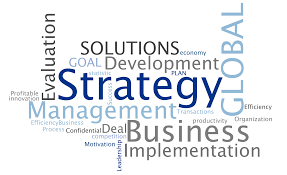
Is AOL inching towards becoming an Internet Bank?
Order Instructions:
for this paper it is critical to follow the instructions and properly elaborate on all the points requested most importantly to support your proposal with documentary evidence and research.
Is AOL inching towards becoming an Internet Bank?
In March 2004, America Online (AOL) launched a streamlined new service for online bill payment. No, it doesn’t yet provide the capability to pay online bills directly through AOL, but it does seem to be a step by AOL toward making that reality.
The service-called AOL Bill pay-is free to all AOL members and is provided through an alliance with Yodlee.com, Inc. (www.yodlee.com) , a company that provides a variety of online personal financial services. After AOL members sign up for the service, they will receive summaries of their online bills via AOL e-mail messages. The messages will include links directly to the business e-commerce websites where members can make their payments.
A nice feature of AOL bill pay is that it creates a single portal (the AOL account) with only one user ID and one password. Once inside his or her AOL account, an AOL member does not have to enter a new ID and password at any of the e-commerce websites.
AOL members can configure AOL bill pay to provide alerts in several different forms (Multichannel service delivery); e-mail, instant messaging, or a text-based message to cell phone. The system can trigger an alert that is more of a warning message when for example, an AOL member bank account balance drops below a certain limit or a credit card transaction exceeds a prespecified amount. It is AOL’s hope that its members will see these types of alerts and warnings as a value-added service.
AOL Bill Pay connects directly to 2,500 web sites that offer bill paying over the internet. If a certain AOL member makes payments over the internet. If a certain AOL member makes payments to a web site not on AOL Bill Pay’s list, AOL can easily add the website to the list.
Assignment questions
Write a 2 page minimum word document responding to this below;
The above case study implies that AOL is “inching” toward becoming an Internet bank. Based on your reading of the articles in the resources below, “The Impact of E-commerce Announcements on the Market Value of Firms” and “E-commerce Processes: A Study of Criticality,” what recommendations would you make to AOL management? What processes (and outcomes) would you advise them to expect?
• Then, consider the case of a small office supply company whose customers are local businesses. The company doesn’t have a big budget for IT, but does have a big need to be able to manage materials, delivery schedules, and build customer loyalty. Based upon your readings this week, would you recommend a B2B model of electronic commerce or instead extend the business by offering a B2C model? What critical factors would come into play in making this decision? Be sure to support your proposal with documentary evidence and research.
Resources.
Articles
• Cullen, A. J. (2007). A model of B2B e-commerce, based on connectivity and purpose. International Journal of Operations & Production Management, 27(2). Retrieved from ABI/INFORM global database.
This article presents a comprehensive model by which electronic commerce transactions may be categorized.
• Subramani, M., & Walden, E. (2001). The impact of e-commerce announcements on the market value of firms. Information Systems Research, 12(2). Retrieved from ABI/INFORM Global database.
This study examines the impact on market value of B2B and B2C e-commerce announcements.
• Duffy, G., & Dale, B. G. (2002). E-commerce processes: A study of criticality. Industrial Management & Data Systems, 102(8/9). Retrieved from ABI/INFORM Global database.
This article examines ten processes critical to the success of an e-commerce engagement
Web Site
• Schoder, D., & Madeja, N. (n.d). Is Customer Relationship Management a Success Factor in
Electronic Commerce? Retrieved from http://www.csulb.edu/web/journals/jecr/issues/20041/Paper4.pdf
This article discusses the relationship between customer relationship management and the effectiveness of B2B and B2C companies in Germany.
Be sure to properly use the resources hear to respond to the questions in the paper, and also read the case study at the beginning before responding to the questions as it will play a critical rule in responding to this assignment.
SAMPLE ANSWER
Is AOL inching towards becoming an Internet Bank?
AOL is largely dependent on business to consumer model and studies show that the model’s cumulative return from investing in e-commerce is higher than for a business-to-business model (Subramani & Walden, 2001). It is thus very pertinent that AOL ensures high-level efficiency of its e-banking system to maximize its performance. AOL requires extensive advertising of its e-commerce services and increase consumer turnover for its services (Subramani & Walden, 2001). It is also important that AOL invest in service differentiation as a way of influencing prices and beating competitive forces that result from multiple companies offering similar digital services.
As a company in the process of developing an internet banking facility, AOL must expect to have strict revenue and expenditure controls through a financial control process. An e-commerce facility employs the use of decentralized order fulfillment of its financial services as well as call center operations and it is imperative that its monitors its payments and credit card clearance through a single financial system (Duffy & Dale, 2002). IT or web changes is another vital process that AOL must anticipate. It involves adjusting e-commerce plat forms promptly responding to threats and opportunities that arise in the business environment.
Prompt response ensures that customers remain satisfied with the e-commerce service and reduce the threat of a mass move to competitors that may have better e-commerce services and response to IT malfunctions (Duffy & Dale, 2002). AOL must also use a call center process to support its e-banking facility. The company may outsource of establish its own call center with round the clock operation and competence on the overall business scenario. It is also very important for the company to ensure a 24-hour sound operation of its website as customers may access it at any time (Duffy & Dale, 2002).
The small supply company that relies on a business-to-business model already requires expanding its model to incorporate a business to consumer model. Studies have shown that integration of e-commerce on attract higher revenues in business to consumer than business-to-business models. In this case, it is important for the company to explore the different types of B2B e-commerce models that would be easily integrated with interact directly with both businesses and consumers (Cullen & Webster, 2007).
It is necessary for the company to clearly understand how different B2B models such as individual trading, collaboration, marketplace, proprietary sales, private exchange aggregation, intranet, and restricted bid may affect its business performance. The different models present different connections serving different purposes to a supplier such as the potential to make large volume sales to an aggregate composed of buyer groups, or making small volume sales to unlimited individual buyers as provided by the individual trading model (Cullen & Webster, 2007). The individual trading model such as website presents the best avenue to tap into both B2B and B2C market for the small supply company.
It is also very important to factor in how to the small supply company intends to manage its relationships with its customers as part of its loyalty management. A customer relationship management system (CRM) is a crucial aspect of an e-commerce venture. It helps the business to analyze customer data and customize marketing initiatives to customers buying habits and preferences. It is essential for the company to focus more intently on valuable customers as a way of improving business performance (Schoder & Madeja, 2004). A CRM is necessary in allowing the company to effectively target its marketing practices to its existing customers and retain them in the long run (Chimote & Srivastava, 2011). It is because it is easier to sell to existing than to new customers.
References
Chimote, N. K., & Srivastava, A. (2011). A Study of the Effectiveness of Relationship Marketing Practices with Existsing Customers in Banaking Industry. Romanian Journal of Marketing, 6(4), 42-48.
Cullen, A., & Webster, M. (2007). A Model of B2B E-commerce Based on Connectivity and Purpose. International Journal of Operations & Production Management, 27(2), 205-226.
Duffy, G., & Dale, B. (2002). E-Commerce Processes: A Study of Criticality. Industrial Management+ Data Systems, 102(8/9), 432-441.
Schoder, D., & Madeja, N. (2004). Is Customer relationship Management A Success Factor in Electronic Commerce? Journal of Electronic Commerce Research, 5(1), 38-53.
Subramani, M., & Walden, E. (2001). The Impact of E-commerce Announcements on the Market Value of Firms. Information Systems Research, 12(2), 135-154.
We can write this or a similar paper for you! Simply fill the order form!












